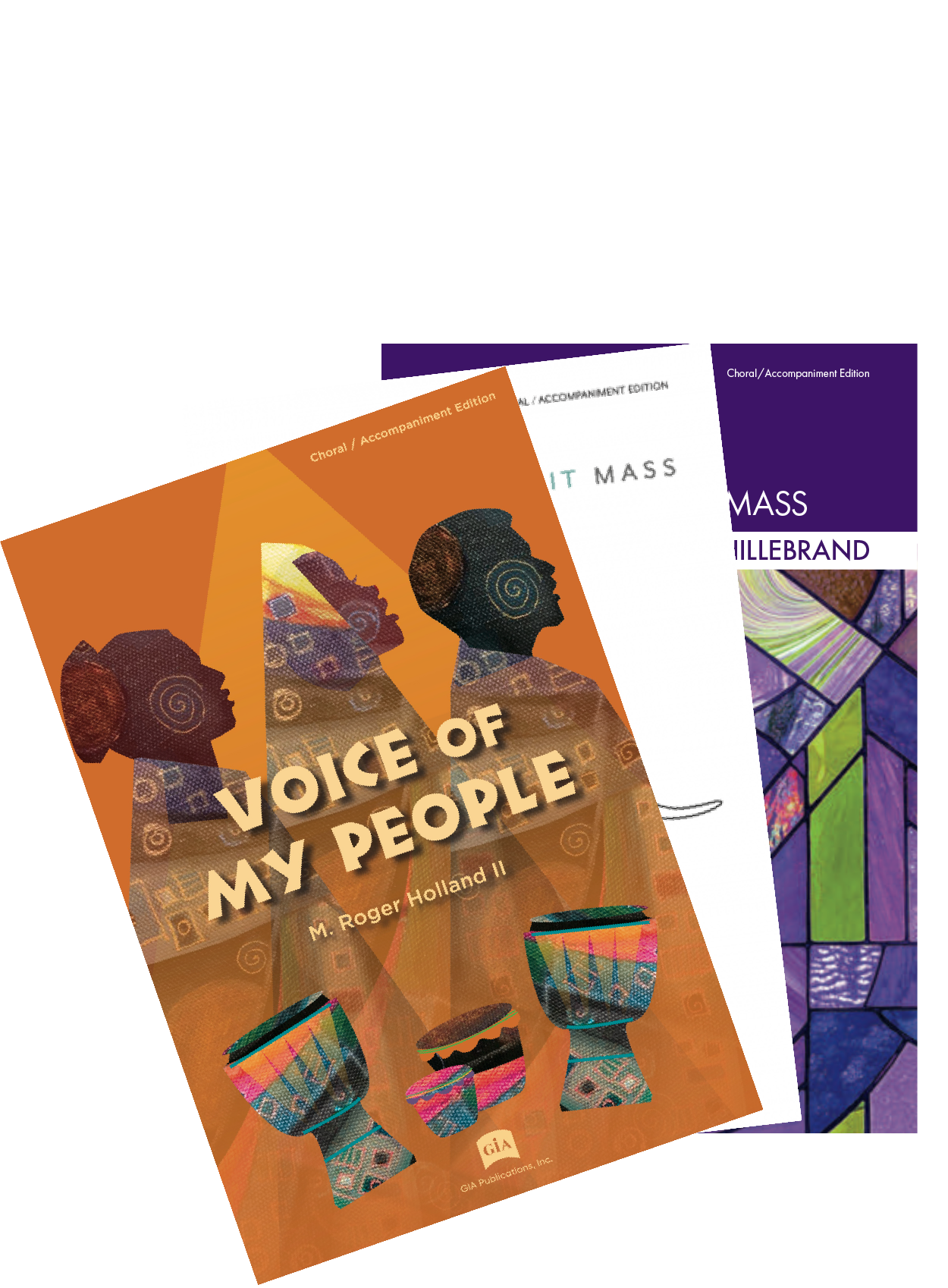By Michael Silhavy
We recently received a letter from a reader of the GIA Quarterly asking us for help in how to choose Mass settings for her parish. (We love receiving suggestions for topics of articles, as well as feedback on what has been published, so please keep writing!) I offer this preface before getting into the topic at hand.
In 2010, I was working in a diocesan worship office. This was the time when the church received the English translation of the third typical edition of the Roman Missal (2010). This was also the time when the blogging phenomenon took hold, so like countless others, I claimed my little piece of social media presence.
As most of my work in the office centered on liturgical music, I hosted a site where music directors in the parishes in the Archdiocese of Saint Paul and Minneapolis could write in and share what new Mass settings they were planning on teaching their assemblies. At that time the archdiocese had about 200 parishes, pretty much evenly divided between urban, suburban, and rural locations. While I no longer have the exact numbers or Mass titles accessible, I was amazed that something like 80 different settings were being used to introduce the new translation of the Mass.
This significant number of new settings being programmed allowed me the chance to remind the musicians in the archdiocese that it would probably be a while before we settled on common repertoire for diocesan or regional liturgies. It also provided an opportunity to remind people that we needed time before the best settings would rise to the top of awareness and use. When the 1970 English translation of the Mass appeared, I have no doubt that thousands of settings were composed. Some never made it from the upstairs church to the downstairs church in the same parish, let alone to the parish next door. Thousands more must have been composed in the decades after 1970. Several hundred settings did get published by various publishers in the United States. Perhaps a few hundred enjoyed enough popularity and use to merit a second printing. Publishers were soon able to identify a few dozen successful settings to include in their catalogs, and of those, about a dozen or two made their way into hymnals or pew resources. I would guess that parishes seem to settle on having five to eight settings in their active repertoire. It was quite the winnowing process.
The year 2010 saw the same pattern repeated, and it continues, although to a lesser degree. Here at GIA, we have received hundreds of Mass settings composed using the revised Order of Mass. We have published around 75 settings, and now we watch a new winnowing process unfold. Returning to the question of how to choose a Mass setting for your parish, let me share how we choose settings at GIA. Our pattern may be of use to you in helping you discern settings.
Choosing settings at GIA
A review team considers every submission we receive. For Mass settings, we first consider the text. Anything that deviates from the official text makes the work unpublishable. This is not to say that every part of the Mass needs to be set, but we can assure customers that what does appear in print has been approved by the United States Conference of Catholic Bishops.
The review generally starts with singing through the Holy, Holy, given its role as a central acclamation in the central prayer of the Mass. We ask if it is singable, constructed intuitively, and seems durable enough to sing week after week.
I suggest parish music directors also start their discernment with the Holy, Holy. Consider how a prospective new setting contrasts with other settings your parish knows. If you already sing one or two settings in D major in 4/4 time, you probably don’t need another. Having different settings in different keys, key signatures, and modalities (major or minor) helps vary and expand the congregation’s experience of singing. You may wish to explore unique formats, such as settings constructed in call-and-response format, unaccompanied settings, or chant-based settings, all the while being sure to have some settings best led by piano and others by organ. You may wish to add a setting that is particular to a season of the church year.
Composers tend to craft the additional eucharistic acclamations (the Mystery of Faith and the Amen) with melodic material taken from the Holy, Holy. This allows for the congregation to hear the Eucharistic Prayer as a whole. While it is laudable to treat the three Eucharistic Acclamations (Holy, Holy; Mystery of Faith; Amen) as a single unit, music directors should not feel obligated to sing a published Mass in its entirety. Remember, in many ways, we are still in a discernment process of finding the very best settings, including finding the best parts within a Mass. Isn’t it true that many of use choose a Glory to God from one setting, the Eucharistic Acclamations from another, and a Lamb of God from yet another?
Our review process then moves to the Glory to God. Here too, we consider many of the same principles of variety. As a publisher—or as a parish—do we need another setting cast in refrain-verse format or one in through-composed format? We may decline a setting based on voicing; we sense many parishes are not interested in SSAATTBB settings.
Parish music directors should also consider the flexibility of vocal parts in the Gloria (and other movements). How easily can it be sung without choir? Might it be good to have a section that can be sung by choir only? Are there parts for any instrumentalists in the ensemble? Are fuller instrumental parts (brass quintet, string quartet) available for holy days and special occasions when weekly repertoire can be dressed up a bit?
Another type of discernment we use in-house and encourage music directors to consider is who is composing the music. While skilled composers can write in a variety of styles, a parish should be certain not to have its Mass settings composed by only two or three composers. Does the composer write from a place of knowledge, respect, and competency, or is the composer writing a parody of a genuine, established style? Are emerging composers given an opportunity to have their works sung? Is the congregation honored with being given music to sing that reflects its diversity? Do individuals who read the credits at the bottom of the page see themselves reflected in what is being sung?
We believe any Mass setting we publish is worthy of being sung by a parish somewhere! We trust we have done some of the discernment for you by publishing music with standard vocal range and providing accompaniments that are accessible and even flexible.
We continue to offer Mass settings in various styles by an ever-growing roster of composers. We continue to make sure that preview copies with audio files are available on our website. What is best for you may not be right for the parish next door, and we remain committed to giving the whole church something to sing. The work of finding those settings that will still be sung 20, 30, or 40 years from now continues. Thank you for adding your voices in that process.

Michael Silhavy is GIA’s Senior Project Editor. With degrees in music education, theology, and liturgical studies from De Paul University, Loyola University (Chicago), and Saint John’s University (Collegeville, MN), Michael has worked in parish, grade school, university, cathedral, and diocesan settings. His work at GIA centers around choral and congregational music, hymnals, and working with composers and authors to create musical and liturgical resources for both Roman Catholic congregations and the wider ecumenical community.







